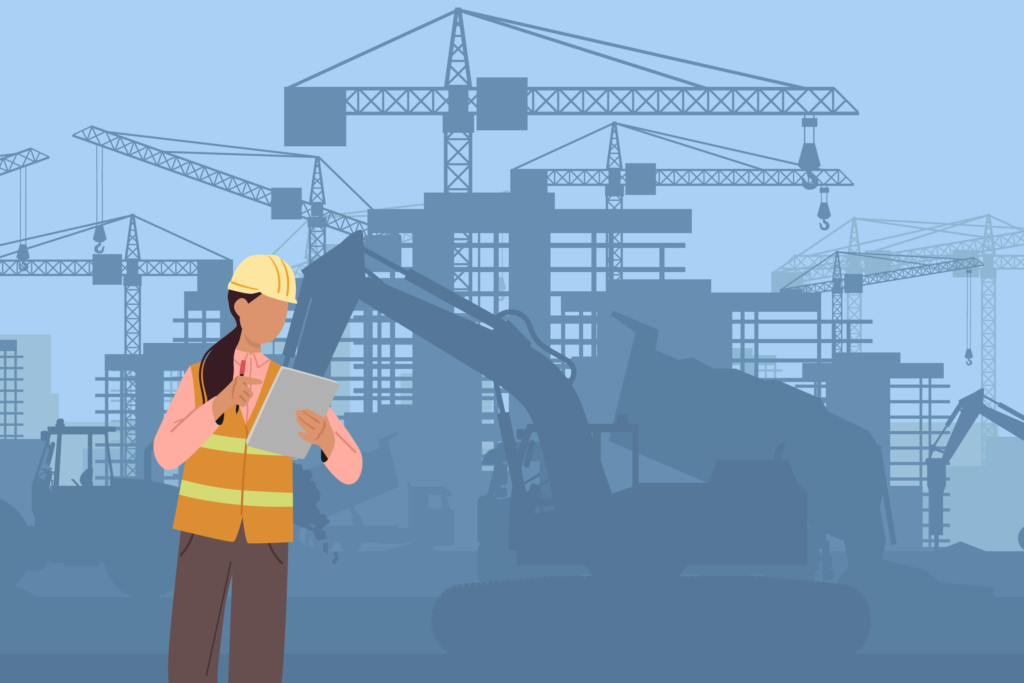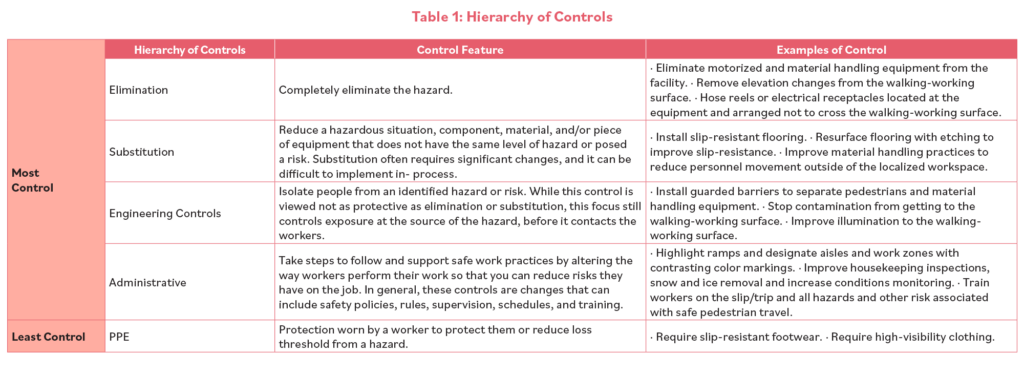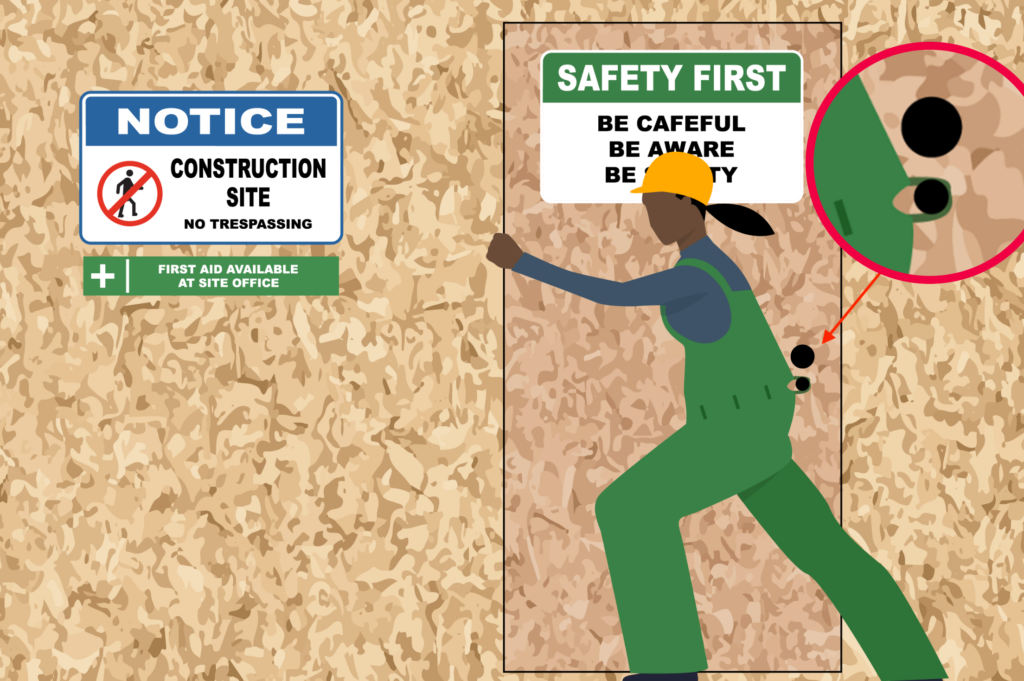
Women in construction have a difficult relationship with personal protective equipment (PPE). On the one hand, PPE is critical for protecting them against chemical, physical, mechanical and other workplace hazards. On the other hand, PPE that doesn’t properly fit women’s bodies can be so uncomfortable or ineffective as to increase the risk of injury or death.
This article will examine the difficulties women have with PPE in construction, as well as ways in which to make positive changes for women in the industry.
PPE and the Hierarchy of Controls
In the hierarchy of controls for eliminating or reducing workplace hazards, PPE is the least effective control. It is the last line of defense in environments in which elimination or other controls aren’t feasible or don’t provide sufficient protection. Table 1 shows the standard hierarchy of controls.

PPE is a critical component of construction safety. Construction sites are dynamic environments with multiple simultaneous hazards at any given moment, which can make it difficult to apply controls that completely eliminate threats. Construction PPE consists of different types of equipment for different tasks, including full harnesses for fall protection, safety glasses, hardhats, ear protection, gloves, boots and respirators.
Women in Construction and PPE
In 2019, the U.S. employed 11.4 million workers in construction. In 2020, that number decreased to 10.8 million due to the COVID-19 pandemic. During that period in 2020, 1.2 million of total workers in construction were women, which is about 1 in 10 workers.
The Canadian organization The CSA Group (formerly known as the Canadian Standards Association) published an extensive report in 2022 on women’s experience with PPE in the workplace. The CSA surveyed 3,000 women who use PPE daily, 18 precent of whom worked in the construction industry. The respondents reported their three biggest problems with PPE were as follows:
- It does not fit properly.
- It is uncomfortable to wear.
- The selection of women-specific PPE is inadequate.
Traditionally, PPE design reflects male body types. As women have made greater inroads into the workforce in fields like construction, PPE design has not kept pace. Proper PPE design uses anthropometric measurements of the body to create PPE that fits workers’ bodies, including facial dimensions for respirators and eye protection, chest and hip measurements for clothing and foot measurements for protective footwear. However, PPE for women often follows a “shrink it and pink it” approach in which manufacturers simply make a smaller version of men’s PPE for women.
As every woman knows, their bodies are not simply smaller versions of male bodies. There are distinct physiological differences that make clothes fit differently. Women’s bodies also change over time in different ways than men’s bodies change, often as the result of childbirth, which requires a different schedule for upgrading and replacing PPE for women.
In the CSA survey, 40 percent of respondents said they have experienced injury related to ill-fitting PPE. One respondent said, “Because the PPE does not fit well, I tend to get caught on stuff. Railings, doorknobs, any sharp corners. Length of coveralls creates a tripping hazard, and sleeves that are either too long or too wide and ill-fitting gloves make everything feel awkward.” Many women reported ill-fitting coveralls causing restricted movement, harnesses that don’t provide fall protection and ergonomic injuries from wearing ill-fitting PPE for several hours a day. Others reported poor tactile responses from ill-fitting gloves and tripping hazards from boots that are too large and too wide.
Some women report using tape or safety pins to secure wrists and ankles on PPE clothing that is too large. Others said that coveralls made to male proportions can be so loose and baggy they present a hazard of catching in moving machinery.
Several respondents said they simply don’t wear their PPE because it increases the risk of injury on the job. As one woman said, “I don’t wear my PPE because it impacts my ability to work safely and efficiently. I would wear it if it fit me as well as it fits my male counterparts.” Some respondents also said they pay out-of-pocket for PPE that fits them better than the PPE their employer provides.
The report also listed several other issues related to PPE for women, including having to remove all PPE and completely disrobe to use the bathroom, which is often very unpleasant on a construction site if the bathroom is an unheated portable toilet in cool temperatures. Some women said they try to avoid using the bathroom at all for that very reason and get urinary tract infections as a result.
Solutions to Creating Better PPE for Women

At a basic level, providing appropriate PPE for women should be a natural and organic part of a healthy safety culture. When employers don’t provide proper PPE for women, they are effectively telling women that their safety is an afterthought, and they don’t consider women an important part of the organizational safety culture.
There are important things to consider as the industry works to address this problem.
- Women’s bodies are different from men’s bodies. They also change over time in ways that are different than they are for men’s bodies. PPE manufacturers should get specific anthropometric data for women’s bodies to inform their product design.
- Women’s PPE must be available in a variety of sizes instead of taking the “one size fits all” approach.
- There should be more consistent regulations and industry standards relating to PPE for women.
- Organizations should collect more data on the impact of sex and gender differences in workplace safety incidents.
- Organizations should help workers better understand the risk of not wearing PPE in the workplace.
- Manufacturers should design PPE to better accommodate a wider range of factors, such as workers in diverse climates and workers with pre-existing health conditions.
- Manufacturers should get direct voice-of-the-customer feedback from women in the workforce when designing PPE.
- Organizations should provide annual PPE training in a variety of languages and encourage management to attend.
PPE is just one component of safety culture. In a perfect world, other controls would mitigate workplace risks before workers had to rely on PPE to protect them. However, when PPE needs to be the last line of defense for worker safety, it must protect women the same way it protects men. Even if women make up a smaller section of workers in the organization, as is the case in the construction industry, every worker is an equal partner in the safety culture. A proper fit for women’s PPE might not seem like a significant step in the progress of an organization’s safety culture, but in a true partnership, keeping the few safe helps to keep everyone safe.

